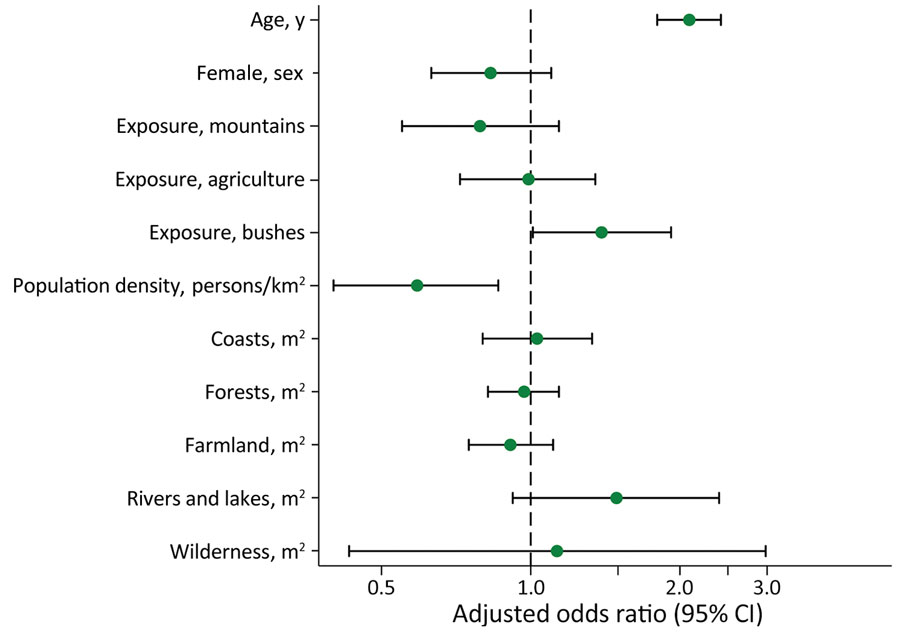Volume 29, Number 7—July 2023
Dispatch
Nonnegligible Seroprevalence and Predictors of Murine Typhus, Japan
Figure 2

Figure 2. Predictors of Rickettsia typhi IgG seropositivity in study of seroprevalence and predictors of murine typhus, Japan. Shown are adjusted odds ratios for age per 10-year increase; population density increase; residential geographic features, such as coasts, forests, farmland, and rivers and lakes; and wilderness per 10-hectare increase. Bushes refer to areas with small trees and weeds.
Page created: May 21, 2023
Page updated: June 20, 2023
Page reviewed: June 20, 2023
The conclusions, findings, and opinions expressed by authors contributing to this journal do not necessarily reflect the official position of the U.S. Department of Health and Human Services, the Public Health Service, the Centers for Disease Control and Prevention, or the authors' affiliated institutions. Use of trade names is for identification only and does not imply endorsement by any of the groups named above.